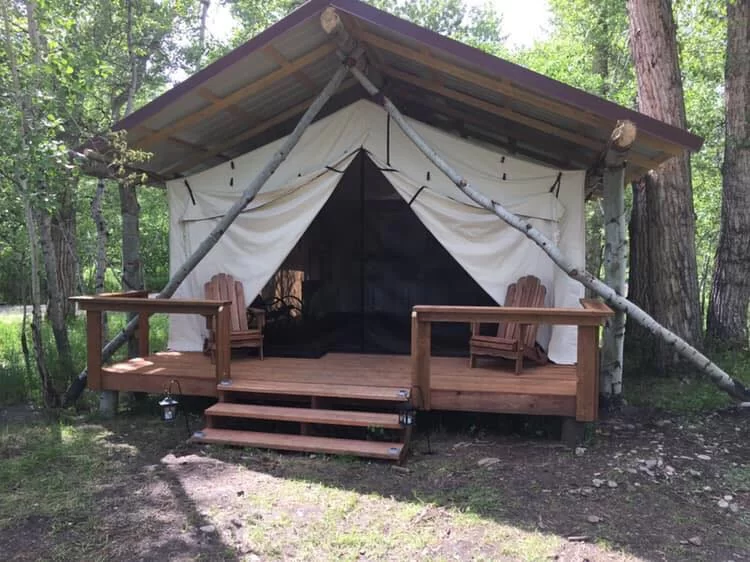Tips for Camping Near National Parks in the U.S.
Discover expert tips for camping near U.S. national parks, including the best parks for camping, essential preparation, and real-life experiences from campers. Plan your next outdoor adventure today.

1. Why Camp Near National Parks?
Camping near U.S. national parks offers a unique opportunity to immerse yourself in nature and explore some of the most beautiful and diverse landscapes in the country. These parks provide a wide range of outdoor activities, from hiking and biking to wildlife watching and stargazing. By camping close to these parks, you can maximize your time enjoying the natural beauty, without the need for long drives to the park entrance.
In addition to the natural beauty, national parks often offer a wealth of educational experiences, such as ranger-led programs, interactive exhibits, and interpretive trails. Whether you’re a seasoned camper or a first-time adventurer, camping near national parks allows you to fully experience what the great outdoors has to offer.
2. Best National Park Camping Tips
When camping near national parks, there are several tips that can help you have a more enjoyable and stress-free experience:
- Reserve Campsites in Advance: Many national parks, especially popular ones like Yellowstone or Yosemite, can get booked up quickly, especially during peak seasons. Make sure to reserve your campsite well in advance to avoid disappointment.
- Prepare for the Weather: National parks can have unpredictable weather, even during the summer months. Be sure to check the forecast before you go and pack accordingly. Bring layers, waterproof gear, and sun protection, and be ready for changes in temperature.
- Pack Smart: Keep in mind that campsites near national parks often have limited amenities. Make sure to pack all necessary camping gear, including tents, sleeping bags, cookware, food, and safety essentials. Don’t forget your bear-proof food storage if camping in bear country!
- Follow Leave No Trace Principles: National parks are protected areas, and it’s important to leave no trace of your visit. Pack out all trash, avoid damaging vegetation, and respect wildlife by keeping a safe distance.
- Check for Special Permits or Regulations: Some parks may require special permits for certain activities, like backcountry camping or fishing. Be sure to check the regulations ahead of time and obtain any necessary permits.
3. Top National Parks for Camping
Here are some of the best U.S. national parks for camping, offering stunning landscapes and great camping options:
- Yellowstone National Park (Wyoming, Montana, and Idaho): Known for its geysers, wildlife, and breathtaking scenery, Yellowstone is a popular camping destination. Choose from campgrounds with access to trails, hot springs, and wildlife viewing opportunities.
- Yosemite National Park (California): Yosemite is a world-renowned destination for its towering granite cliffs, waterfalls, and lush valleys. Many campgrounds are located in prime spots for hiking and exploring the park’s iconic landmarks.
- Great Smoky Mountains National Park (Tennessee and North Carolina): Offering a diverse range of flora and fauna, the Smoky Mountains are a top choice for campers looking for a peaceful retreat in the Appalachian Mountains.
- Zion National Park (Utah): With its striking red rock formations and slot canyons, Zion offers a stunning backdrop for camping. The park’s campgrounds are ideal for those looking to hike, rock climb, or simply relax and enjoy the views.
- Acadia National Park (Maine): For those seeking coastal beauty, Acadia provides stunning views of the Atlantic Ocean, mountains, and forests. Camp near the shore or deep within the park to enjoy hiking, biking, and nature walks.
4. Planning Your National Park Camping Trip
When planning your national park camping trip, here’s what you need to consider to make it a success:
1. Research the Park: Each national park is unique, offering different activities and environments. Research your park of choice to learn about the available campsites, activities, and any special features or rules that may apply.
2. Create an Itinerary: Plan your days around key attractions and activities, such as hiking trails, scenic drives, or ranger programs. Include some downtime to relax at your campsite and enjoy the surroundings.
3. Prepare for Outdoor Adventures: Bring along all the necessary gear for outdoor activities like hiking, kayaking, or fishing. Make sure to bring safety equipment, such as a map, compass, or GPS, especially if you plan on venturing into the backcountry.
4. Check for Availability: National park campgrounds can fill up fast, so it’s essential to make reservations as early as possible. If your park of choice doesn’t have a reservation system, plan to arrive early to secure a spot.
5. Pack Essential Supplies: Be sure to pack enough food, water, and gear for your trip. Some parks have limited access to food or supplies, so it’s important to come prepared.
5. Real-Life National Park Camping Experiences
Many campers share memorable stories of their national park camping experiences. Take, for example, the Thompson family’s trip to Yellowstone last summer. “We woke up to the sound of bison in the distance,” says Jeff Thompson. “It was a truly magical experience, and the kids loved seeing the animals up close. We spent our days hiking and exploring geysers, and the evenings around the campfire were unforgettable.”
Similarly, the Garcia family recently camped in Acadia National Park. “We spent the morning hiking to the top of Cadillac Mountain, then took a leisurely bike ride along the park’s scenic roads,” says Maria Garcia. “It was the perfect combination of adventure and relaxation.”
---
SEO Title: Tips for Camping Near National Parks in the U.S.
SEO Keywords: camping near national parks, best national park camping tips, top U.S. national parks for camping, family camping near national parks, camping trips in national parks
SEO Description: Discover expert tips for camping near U.S. national parks, including the best parks for camping, essential preparation, and real-life experiences from campers. Plan your next outdoor adventure today.







